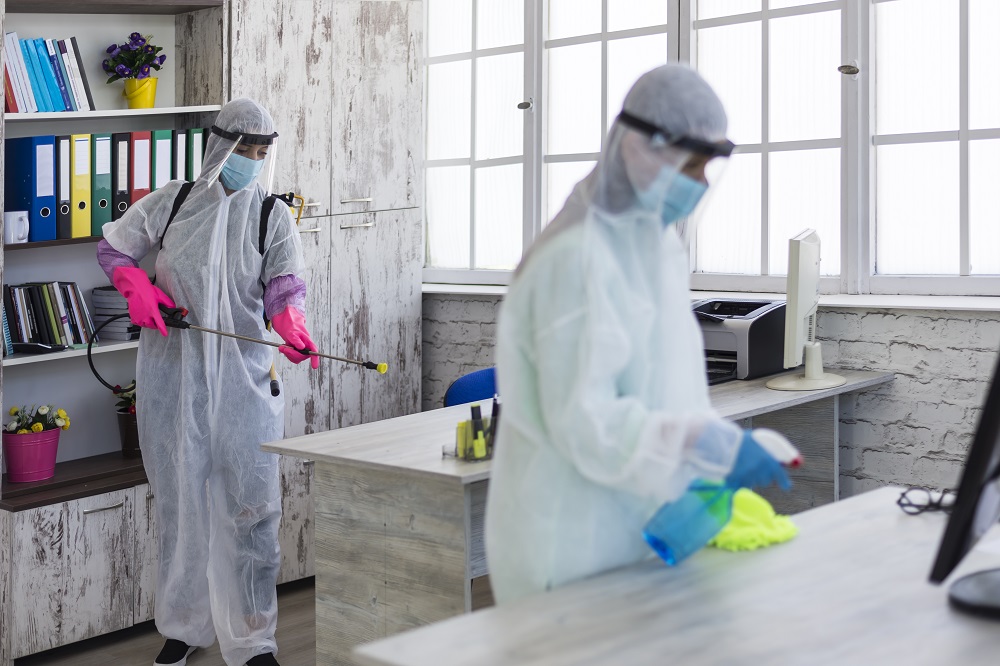
From hiring poorly trained COVID-marshals, to tasking employees with anti-viral cleaning and following outdated contingency plans, Lisa Macqueen, co-founder and director of Cleancorp, has revealed the common mistakes made in workplaces that are putting the health and safety of employees and visitors at risk.
1. Failing to update to a new contingency plan
As fit-for-purpose disinfection equipment and chemicals have become more available and less costly since the start of the pandemic, the price of anti-viral commercial cleaning has also gone down.
However, many businesses still use the COVID-19 contingency plans they developed in February or March, and which locked in a preferred cleaning supplier at a high cost.
For instance, while Cleancorp has reduced its prices per square metre since the start of the pandemic, because of products and equipment being more readily available.
“If they haven’t already, organisations should revisit their contingency plans to ensure they are not being overcharged or are locked into an old pricing schedule when they could be shopping around for more competitive rates.”
2. Tasking employees with cleaning
Many businesses, such as gyms, have tasked their employees with cleaning tasks throughout the day. However, Macqueen warns if the organisation and its employees have not received infection control training and are not following best practice methods, it is at the expense of the health and safety of all people on site.
3. Missing crucial touchpoints
Whether it’s employees cleaning throughout the day or professional cleaners coming in outside of hours, many important touchpoints are being forgotten. These include surfaces underneath chairs in hospitality premises – and the chairs themselves.
4. Relying on spray-and-wipe techniques
In too many commercial premises, Macqueen says sees surfaces being sprayed and then immediately wiped when the key to properly disinfecting surfaces is allowing disinfectants to ‘cure’ for 10 minutes before wiping down. When cleaning an area that has had a confirmed case of COVID-19, hospital-grade disinfectants need to be used in the curing process. Letting a disinfectant cure ensures all bacteria is eradicated before wiping away.
5. Lack of transparency with employees and site visitors around cleaning practices.
It is not uncommon for businesses to display signage about COVID-19 and how to wash hands correctly. However, to demonstrate that they prioritise the health and safety of employees and customers, Macqueen advises it is best for businesses also to provide information about their effective infection control practices and products.
“Greater transparency from organisations around the cleaning tools, disinfectants, agents and techniques they are using is crucial for gaining the trust of their workers and customers, as well as ensuring that these people feel safer and more confident about their personal health and safety.”
6. Implementing rules for legislative compliance only, rather than for people’s safety
According to Macqueen, many organisations have taken steps to convey their compliance with Government requirements to avoid fines, WorkCover claims or negative publicity – instead of doing so with the aim of making people safe. An example is a business placing a COVID-19 Safe Hygiene Marshall on their premises who is not trained to identify and implement hygiene, social distancing and other safety measures on-site.
7. Using the same cleaning materials across multiple areas
Despite risks of cross-contamination, Macqueen recommends cleaners at sites, such as restaurants, cafes, fitness facilities and gyms, often use the same cloth to wipe down multiple pieces of equipment, tables, surfaces and rooms. Clean wipes must be used for every piece of equipment shared between people and rooms. Sufficient instruction and supervision should be provided to make sure that these surfaces are properly sanitised.
8.Applying the same rules to confirmed COVID-19 sites
How cleaning staff manage physical distancing is just as critical as how employees manage it. Organisations need to check that cleaners conducting a deep clean on a confirmed COVID-19 site follow more stringent social distancing on site.
Comment below to have your say on this story.
If you have a news story or tip-off, get in touch at info@13.238.154.125.
Sign up to INCLEAN NZ’s newsletter.